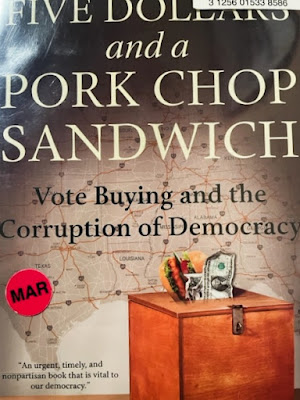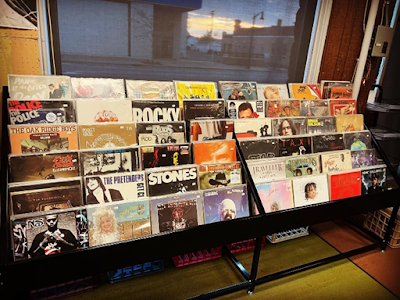Because I was born in Cleveland and raised in New Jersey I'm routinely asked how I ended up in Minnesota. Answer: In 1976 I came to attend a Missionary Training Center in Bloomington called Bethany Fellowship.
Sometime early in my freshman year I heard reference to a traumatic event that occurred several years earlier, a massive F4 tornado which took 15 lives, many of them part of the Bethany community.
When I learned about it, it surprised me at how little information there was. No one talked about it and most people are too polite to pry. We only knew it was something that happened and a lot of people were killed.
Somewhere along the way I learned a few bits and pieces. The story of how Pastor Brokke failed to make it to the cabin and his son lay on top of him became an almost legendary tale, as well as the manner in which the cabin was lifted from its foundation and thrown directly into the lake. The images were vivid and painful, but always in absence of context.
This year I finally had all my questions answered and my narrative corrected. The details had been compiled in a book by someone who was there, Sue Dugan Moline. For some reason I'd thought that the entire Bethany staff had gone to a lake up near Brainerd, like a summer retreat, and this deadly tornado struck. As it turns out, the outing involved only three Bethany families. (And the lake where they had gone was in Outing, MN, the center of the state and not the Northwest.
When I first learned of Sue Dugan Moline's book, I very much wanted to read it. Perhaps in part because I personally knew some of the survivors who experienced it. Though Sue's father was a popular teacher at the school, teaching classes on Homiletics and the Book of Acts, I can't recall him ever making a single reference to it. And although this event was long ago and far away, the book made it feel like yesterday.
EN: The Lake Turned Upside Down is an incredible story of the fifth deadliest tornado in Minnesota history. How many people from Bethany or Bethany related people were there at Roosevelt Lake that day?
 |
| Sue Dugan Moline |
SDM: 28 people total were at the four Bethany cabins that week. At the time of the tornado there were 22 people on the property. Six had left shortly before the tornado. The 28 were either living at Bethany or were relatives of Bethany staff who had reserved the cabins.
EN: What was the occasion that brought these three families there that week?
SDM: The cabins were available for Bethany staff member vacations for up to two weeks each summer. The Harold Carlson family was in Cabin #1 with two sons (Darrel and Dale) and his in-laws, Rev. Arthur and Minnie Olson.
The Dugan family had cabins #2 and #3, one reserved by my parents Toby and Vonnie Dugan, and one reserved by my grandma Edith Dugan with her youngest children Diane and Terry. The Dugans also had brought a Bethany pop-up camper for extra sleeping space. The two-week vacation was a Dugan family reunion with our out-of-state uncles and aunts staying with us -- Ken and Barb Dugan and sons (Ron and Don) from Canoga Park, California, and Rev. Dick and Priscilla Dugan and 3 kids (Sheila, Shane & Sharon) from Huron, SD. 18 of the 28 were Dugans.
The last cabin was reserved by Rev. Harold and Cathy Brokke and their two sons, Dan and Paul.
EN: 15 people were killed in the superstorm. How many died from the Bethany group?
SDM: Seven of the deaths occurred on the Bethany property, 12 total were killed in the Outing F4 tornado. The other three deaths occurred in other tornadoes that same day (The Northwoods Tornado Outbreak, as it is called by the NWS).
EN: What prompted you to write this book?
 |
| Divers were called in to search the lake for bodies. |
SDM: Curiosity is what prompted me to start asking questions. I realized that I had a very limited memory of the event and always wondered what other survivors remembered. But I was a rather shy and self-conscious young person and did not find it easy to ask questions of other survivors. After both of my parents had died, I realized that if I didn't ask questions soon, there would be nobody left to ask or at least memories intact. At that point, five survivors had already died and Harold Carlson and Cathy Brokke were both in their 90s.
Although I never intended to write a book, just the sheer volume of stories that I collected from survivors, first responders and people "up north" compelled me to document them. I had become a "clearing house" of sorts for the August 6, 1969, tornado and people were very interested in the story.
EN: What surprised you most when you began assembling all these stories?
 |
| Debris where one of the cabins had been. |
SDM: I was surprised how willing everyone was to talk about their memories. I was also surprised by how interested the central Minnesota area was in the story and information I had collected. I think my story was covered by 7 different newspapers across northern Minnesota and many people responded to me with their individual memories via phone calls and emails.
EN: You shared that people chose not to talk about what happened that tragic day. How would have things been different had these stories been shared in the years that followed? I’m thinking of the 70s.
SDM: I have not thought about that. My book might have been longer, or perhaps I would not have written it. I do wish I could have interviewed my parents, my two uncles, and Pastor Brokke. The story would have been more complete. My uncle Dick Dugan did write an article or two after the event and the death of his daughter Sharon. And Dan Brokke wrote an article for a youth magazine. So they were comfortable sharing their stories.
But 45 years later when I met with Bethany classmates for breakfast at Perkins (every 2-3 months), I asked them if they had ever heard the story and they had not. They knew a few details, but we did not talk about it as classmates. I think part of that era was politeness in not bringing up painful issues. In the long run, talking about it was very therapeutic and filled in so many details for our children and grandchildren.
EN: There were four cabins that the families were staying at. When the tornado suddenly came, most of the people attempted to gather in the one cabin. Why that one? How many were in the cabin when it was lifted up and tossed into the lake? Where was everyone else?
SDM: Cabin #3 was at the bottom of a very, very steep hill. Both cabins #1 and #2 were at the top of the hill, high above the lake. People were taught to run to the lowest area in a storm or tornado. Because of that my Grandma Dugan and family from cabin #1 ran down the hill to our cabin because it was low-lying, right at lake level. The Brokke's ran over from cabin #4 -- probably mostly to warn us that they had seen a tornado. Their cabin was furthest west and the tornado was coming from the west. Two of them stayed in cabin #3 (Cathy & Paul), but Pastor Brokke and Dan stayed outside and hit the ground.
EN: Was there any “safe place” there? We have over 10,000 lakes in Minnesota with cabins around them. Can something like this happen again and how can people prepare, to avoid a similar outcome?
SDM: There was no safe place on the property. Being thrown into the lake actually saved lives. If we had more notice, we probably would have headed up the hill to cabin #1, the older original cabin that did have a walkout basement facing west. We all would have died. That cabin was also completely destroyed and only 9 cement blocks remained intact in the walkout basement. Evy Carlson and her parents, Rev. Arthur and Minnie Olson, were violently killed. We don't know where they were when the tornado hit -- perhaps trying to get down to that walkout basement via an outside stairway, but they were all killed.
Some people now will build "safe rooms" in their cabins where the high water table will not allow a basement. My daughter and son-in-law built a lake home in Crosslake and we have a "safe room" between the home and garage, totally encased in cement. As well, communication via cell phones allows people to follow the weather and radar. In 1969, there were no civil defense sirens in the town of Outing, Minnesota.

















